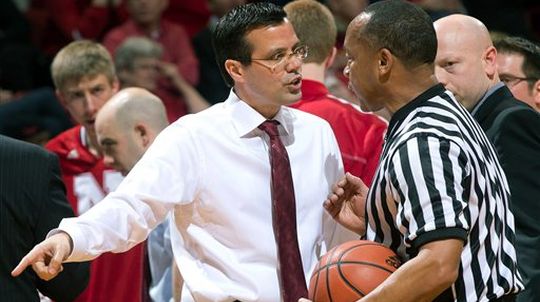Three Takeaways from Nebraska’s Win Over Miami
Posted by Deepak Jayanti (@dee_b1g) on December 5th, 2013Heading into the late set of games on Wednesday night, the B1G was down 5-4 in the Big Ten/ACC Challenge and had to win at least two out of the three remaining games to force a tie. Even though Nebraska was favored by 4.5 points at home against Miami (FL), few expected the Cornhuskers to dominate the game – which ultimately resulted in a 60-49 win that, given Michigan State’s upset loss, saved the conference’s fate. At the end of the day, Nebraska beat a team that’s only 5-3 on the young season, but it is an important win in the Tim Miles’ era. Expectations within the program, albeit still fairly low, need to be met in order for players to gain confidence heading into the conference season. The fact that the Cornhuskers showed that they belong against a team that is a potential mid-pack ACC team is a big deal for Miles and Nebraska basketball. This win won’t put the Huskers on the map, so to speak, but Miles and his squad are making small statements that they will compete on both ends of the floor, and especially at home.
The following are three takeaways from this game and what they mean for Nebraska going forward:
- It doesn’t hurt to have four players on the court who can handle the ball. Almost every team in college hoops plays a three-guard lineup with a forward who is a “stretch four” and a true big man. But only a few teams have four guys who can handle the ball effectively in the half-court and Nebraska is one of them. Any of the Huskers’ three guards – Tai Webster, Deverell Biggs, and Ray Gallegos – can handle the ball and set up the offense. Terran Petteway at the forward position is just as comfortable moving the ball horizontally in the half-court. Miami played zone for most of last night’s game but Miles’ team was perfectly comfortable running its motion offense because they had at least four guys who could put the ball on the floor and penetrate the gaps. Consistent dribble penetration and kick-out passes forced the Hurricanes’ defense to fall apart, resulting in numerous mismatches. Playing four guards could hurt this team down the road in terms of rebounding, but it’ll keep the offense active and prevent them from getting into major scoring slumps. The offense also doesn’t appear to be too complex, which enables the players to focus on moving the ball around consistently and attacking the basket. A simple but active offense helps a young team gain some confidence against good competition.
- Speaking of being active, the Huskers consistently try to swat the ball on defense. Non-conference statistics can be deceiving because teams play vastly different schedules, but there is one statistic about this Nebraska team worth discussing: steals. They are averaging almost eight steals per contest and rank 22nd in the country at 12.0 percent, according to Ken Pomeroy in steal percentage. Against Miami, Nebraska recorded 10 steals with its smaller lineup causing havoc in the half-court. The Hurricanes tried to take advantage of their size by posting up Tonye Jakiri, but the weak side defense was all over him once he caught the ball, forcing him to kick it out immediately. Petteway and Shavon Shields are quick enough to enter the paint to help the post defender and immediately step out to defend the perimeter when the ball goes back out. Going for steals usually leaves perimeter somewhat open, but the Husker guards held the Hurricanes to 28 percent (7-of-25) shooting from beyond the arc, suggesting that the closeouts were good enough.
- At some point, Webster will need to create offense for his teammates. At this juncture of the season, Miles’ team isn’t very good at dishing the rock. They average just eight assists per game and there isn’t a single guard who averages more than a couple of dimes per game, which will hurt them during the conference season. Having said that, Webster is still young and he should mature as a player by February to create some opportunities in the half-court. If not Webster, it could be Gallegos – a more experienced player who is used to the physicality and pace of the Big Ten. If either of them could dish to the corner, Miles will find a way to get Florida transfer Walter Pitchford open looks from beyond the arc. Despite being 6’10″, Pitchford shoots 45 percent from long range and, as an example, nailed 3-of-6 last night against Miami.












































